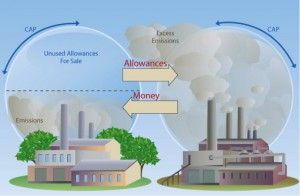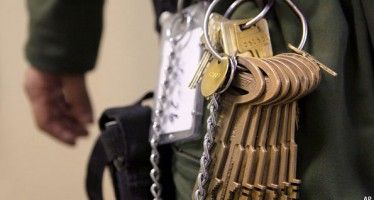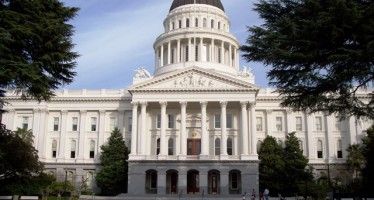Money and costs become central theme of cap and trade
 When discussing California’s landmark cap-and-trade legislation set up to pay for carbon emissions, there is more conversation about money than there is about climate change. How much will the program cost? How will the money be spent? How will the overall economy be affected if billions of dollars are being redirected by governmental regulations?
When discussing California’s landmark cap-and-trade legislation set up to pay for carbon emissions, there is more conversation about money than there is about climate change. How much will the program cost? How will the money be spent? How will the overall economy be affected if billions of dollars are being redirected by governmental regulations?
On Friday, the Sacramento Bee reported that the governor and legislative majority leaders agreed to put aside a discussion on how much is in the cap-and-trade pot and how to spend increased money over what was already authorized.
On the same day last week that the California state Senate passed bills mandating new regulations to deal with climate change, business people met in Burbank to understand the effects, and particularly the costs, of the state’s cap-and-trade program.
Sponsored by the Los Angeles County Business Federation (BizFed), money and costs were the central theme of the discussion.
Energy attorney Dennis Luna, who also serves as editor-in-chief of California Oil and Gas Report, predicted that the reported doubling of funds brought in by the cap-and-trade auctions was “probably low by a lot.” He said that the pot of money generated by the cap-and-trade auctions and designed to deal with climate issues was a tempting target for those seeking government funds. “The new game in town – whatever you are doing, you are reducing greenhouse gases,” he said.
Colleen Callahan, Deputy Director of UCLA’s Luskin Institute for Innovation said the Legislature passed bills to ensure that spending from the cap-and-trade fund would help produce jobs and benefit businesses.
However, she was challenged by a manufacturer in the audience who was fearful that her manufacturing plant might not survive because of the new costs imposed by the law.
Other audience members also raised concerns about cap-and-trade. One argued that California only produces 1 percent of carbon emissions worldwide and the plan has not reduced that mark while at the same time encouraging manufacturers to move and causing economic disruption.
Gary Gero of Climate Action Reserve responded that while it appears California is making the fight against carbon emission alone that was not the case. He said 40 percent of the world’s population lived under carbon pricing programs. He also contended that when the United States Environmental Protection Agency’s Clean Energy Plan kicks in, other states in the country would become more engaged in carbon control. He said California would lead as a model to the nation with a robust and clean economy.
Another member of the audience asked if the predictions the effect of the law would have on small business when the bill was signed nearly 10 years ago came to pass. Richard Stapler of the California Natural Resources Agency simply stated it was too early to tell.
The cost question to small business and families was of paramount importance to the gathering. On the panel, Tiffany Roberts, representing the Western States Petroleum Association, argued that small business energy costs are up and that families will feel the cost increase in goods and services. She reasoned that must be the case since the program was designed to put a price on carbon.
As to how the money gained from the cap-and-trade program is spent, there was surprisingly little mention of the high-speed rail, which currently will take about $500 million dollars from the cap-and-trade fund. Richard Stapler said the Air Resources Board will scrutinize the use of the money and citizens can monitor how the money is spend on the ARB website.
The California Chamber of Commerce has sued over cap and trade, arguing that revenue produced by the cap-and-trade law is the result of a tax increase, which required a two-thirds vote in the Legislature. The legislative vote was below two-thirds.
If an appeals court sides with the Chamber of Commerce position, attorney Dennis Luna said it would cause an earthquake shaking the foundation of the cap-and-trade program.
Related Articles
Bail reform tops criminal-justice efforts in next legislative session
California has long been known as a law-and-order state, particularly following the crime spikes of the 1980s. The state passed
Sen. Huff: People are sick of partisan politics
2016 started with a bit of a bipartisan bump with Senate Pro Tem Kevin de León and former Senate Republican
New round of DMV ‘motor voter’ errors reported
One of Gavin Newsom’s first acts after taking office as governor in January was to create a “DMV Reinvention Strike




